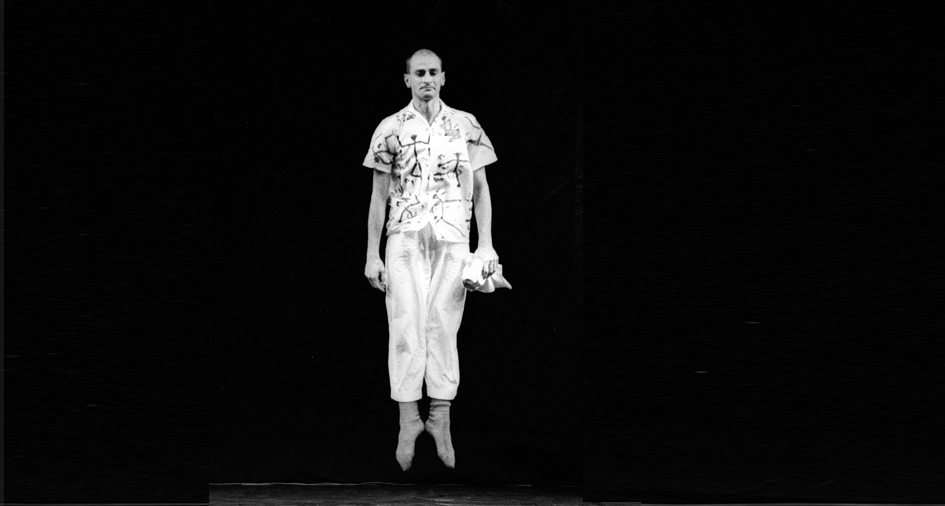
Cómo interpretar el movimiento de una forma personal/How to interpret movement in a personal way
L'animal a l'esquena (Celrà)
From 26/09/2022 to 30/09/2022
Cesc Gelabert
( Cesc Gelabert )

L'animal a l'esquena (Celrà)
From 26/09/2022 to 30/09/2022
Cesc Gelabert
( Cesc Gelabert )

This laboratory revolves around the model for a dancer that I have developed over my more than fifty years as a dancer and choreographer.
It centres around these questions: how to interpret a piece of choreography in a personal way? Whether your own work or someone else’s, in an improvisation context or more formal, so as to serve the needs of the choreography and so that, as performers, we feel it as our own, identify with it.
How to execute it? Indirectly, we shall deal with choreography, improvisation technique or other questions in relation to our profession.
detalls
It centres around these questions: how to interpret a piece of choreography in a personal way? Whether your own work or someone else’s, in an improvisation context or more formal, so as to serve the needs of the choreography and so that, as performers, we feel it as our own, identify with it.
How to execute it? Indirectly, we shall deal with choreography, improvisation technique or other questions in relation to our profession.
detalls
I define dance as inhabiting the body with both mind and feelings.
In more detail, I use as a mnemonic the symbol of the quadriga (a traditional symbol of the self), divided into the body (the chariot), the emotions (the horses), everything we perceive and consider not part of ourselves (the scenery), the mind (the driver) and the spirit (the warrior).
When I speak of performance I mean the following: performance understood as a secret, intangible pact, a private, subjective agreement between a choreographer and a dancer, that allows the dancer to execute the choreographic piece faithfully and in a personal way. Or that allows a pupil or person practising it to use the exercise in their own way. Or a citizen to experience the fragment of movement with a sense of the personal.
Performance is almost always something very subtle. It integrates style and personality. It concerns many aspects that are usually intangible. Normally, these belong to the mind, to a person’s way of dealing with feelings, to perception. More than just the steps, it’s a question of how to interpret them. Of the how, the manner of doing so. To dance, it’s not enough to know how to move. You need to know how to do this well, adapting personal qualities and characteristics to the different styles in each culture of movement.
The first part will be a warm up, with a series of exercises in which to apply in a more specific way, not just movement techniques but also the ideas we will be dealing with later in a more creative, open context. Next we shall work on performance based on some of my own choreographic pieces and above all on material brought by the participants, whether pieces they have danced before or others that we shall create during the laboratory.
There will, as usual, be a space at the start, after the break or at the end, to explain proposals verbally and and discuss them with everyone.
In more detail, I use as a mnemonic the symbol of the quadriga (a traditional symbol of the self), divided into the body (the chariot), the emotions (the horses), everything we perceive and consider not part of ourselves (the scenery), the mind (the driver) and the spirit (the warrior).
When I speak of performance I mean the following: performance understood as a secret, intangible pact, a private, subjective agreement between a choreographer and a dancer, that allows the dancer to execute the choreographic piece faithfully and in a personal way. Or that allows a pupil or person practising it to use the exercise in their own way. Or a citizen to experience the fragment of movement with a sense of the personal.
Performance is almost always something very subtle. It integrates style and personality. It concerns many aspects that are usually intangible. Normally, these belong to the mind, to a person’s way of dealing with feelings, to perception. More than just the steps, it’s a question of how to interpret them. Of the how, the manner of doing so. To dance, it’s not enough to know how to move. You need to know how to do this well, adapting personal qualities and characteristics to the different styles in each culture of movement.
The first part will be a warm up, with a series of exercises in which to apply in a more specific way, not just movement techniques but also the ideas we will be dealing with later in a more creative, open context. Next we shall work on performance based on some of my own choreographic pieces and above all on material brought by the participants, whether pieces they have danced before or others that we shall create during the laboratory.
There will, as usual, be a space at the start, after the break or at the end, to explain proposals verbally and and discuss them with everyone.
